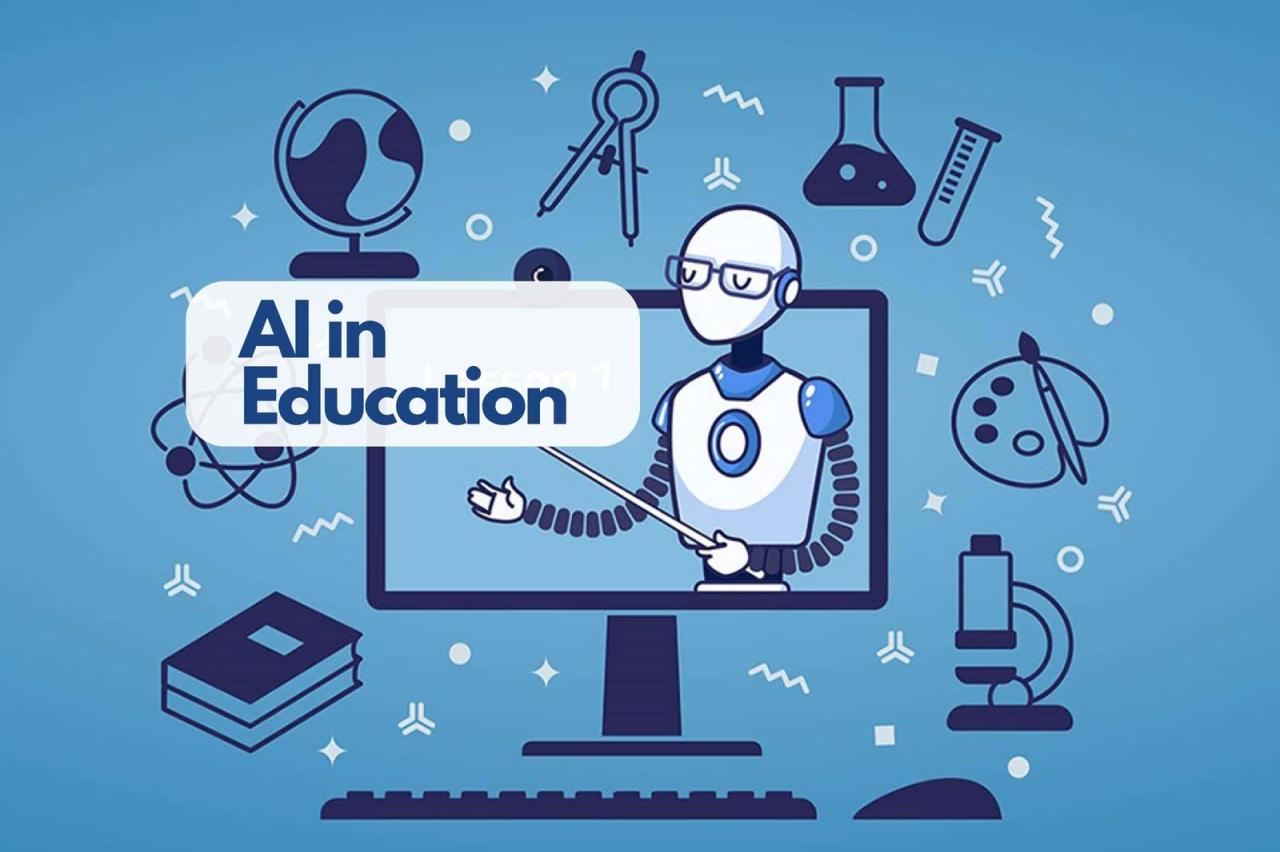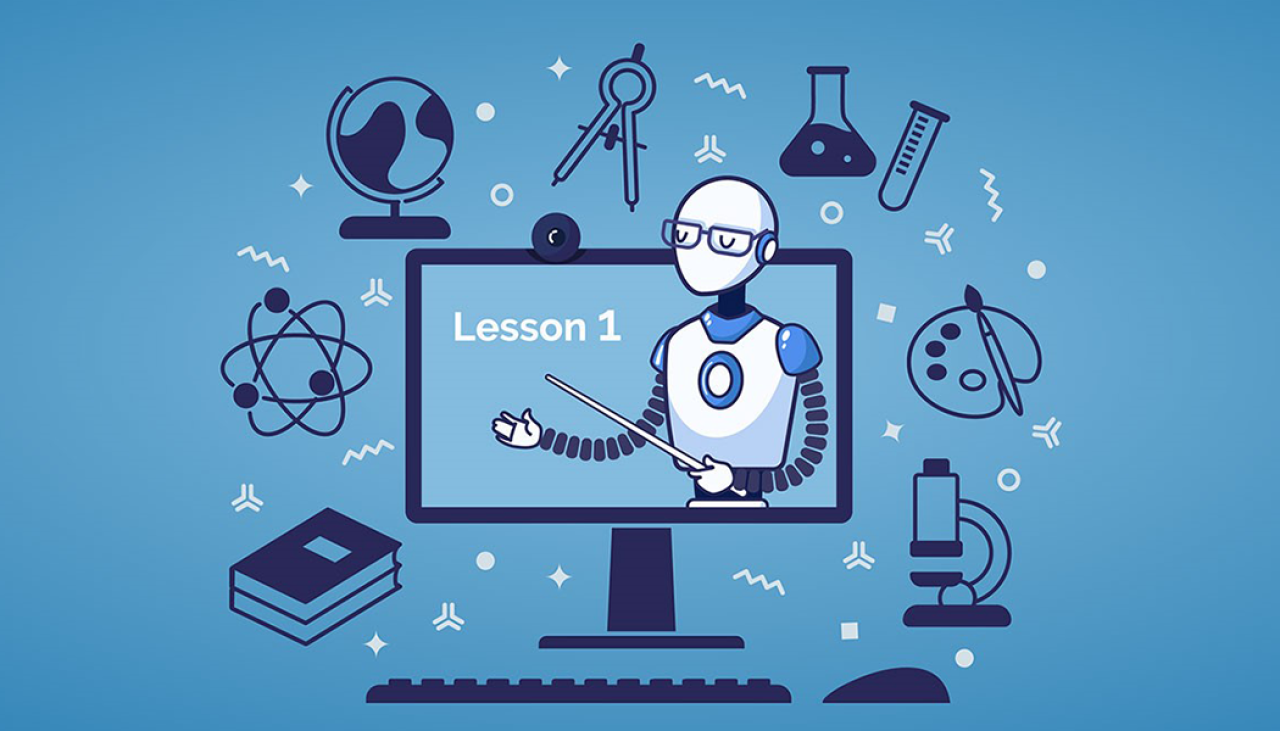AI in education technology is rapidly reshaping how we teach and learn. From personalized learning pathways to automated assessment, artificial intelligence offers unprecedented opportunities to enhance educational experiences for students of all ages and abilities. This exploration delves into the transformative potential of AI across various educational sectors, examining both its remarkable benefits and the crucial ethical considerations it presents.
This examination will cover the integration of AI in personalized learning, automated assessment, the creation of innovative educational tools, teacher training, and its impact on STEM education and early childhood development. We will also address crucial aspects like bridging the digital divide, enhancing student engagement, and ensuring data privacy and security within the educational context. Ultimately, this analysis aims to provide a comprehensive understanding of AI’s role in creating a more effective, equitable, and engaging educational landscape.
AI-Powered Personalized Learning: AI In Education Technology

AI is rapidly transforming education, offering the potential to personalize the learning experience for each student. This shift away from a one-size-fits-all approach promises to improve student engagement, comprehension, and overall academic success by tailoring educational content and pacing to individual needs and learning styles. This personalized approach leverages AI’s ability to analyze vast amounts of data to identify strengths, weaknesses, and optimal learning strategies for each learner.
AI-powered personalized learning systems analyze student performance data, including test scores, assignments, and even learning patterns like time spent on specific tasks and areas of difficulty. This data informs the AI’s recommendations for customized learning pathways, providing students with targeted resources and activities designed to address their individual needs and accelerate their progress. This dynamic adaptation allows for a more efficient and effective learning experience, catering to diverse learning styles and paces.
AI-Powered Personalized Learning Pathway Design for High School History
A personalized learning pathway for a high school history course could begin with an initial diagnostic assessment, perhaps a multiple-choice quiz covering fundamental historical concepts and timelines. The AI would analyze the student’s responses, identifying areas of strength and weakness. For instance, if a student demonstrates a strong understanding of ancient civilizations but struggles with the American Revolution, the AI would tailor subsequent learning materials accordingly. The system might recommend supplementary videos focusing on the American Revolution, interactive simulations of key battles, or personalized practice quizzes designed to reinforce understanding of specific concepts. The pathway would dynamically adjust based on ongoing student performance, providing additional support in areas where the student is struggling and challenging them with more advanced material when they demonstrate mastery. The system could even suggest alternative learning materials, such as primary source documents or historical fiction novels, to cater to different learning styles. Progress tracking and adaptive assessments would ensure the pathway remains relevant and effective throughout the course.
Benefits and Drawbacks of AI-Driven Personalized Learning Systems
AI-driven personalized learning offers several compelling benefits. Students receive targeted instruction, leading to improved comprehension and academic performance. The adaptive nature of these systems keeps students engaged by offering challenges at their appropriate skill level. Furthermore, educators can gain valuable insights into individual student learning styles and needs, enabling more effective teaching strategies. However, drawbacks also exist. The reliance on data raises privacy concerns, particularly regarding the collection and use of student information. The cost of implementing and maintaining these systems can be substantial, potentially creating disparities in access. Additionally, the effectiveness of AI-driven personalization depends on the quality of the data used and the sophistication of the algorithms employed. Over-reliance on technology could also detract from essential human interaction and mentorship in the learning process.
Comparison of AI Algorithms for Personalized Learning Recommendations
Several AI algorithms are used for personalized learning recommendations. Recommendation systems based on collaborative filtering analyze the learning patterns of similar students to predict what a given student might find beneficial. Content-based filtering, on the other hand, focuses on the characteristics of the learning materials themselves, recommending items similar to those the student has previously engaged with successfully. Hybrid approaches combine these methods, leveraging the strengths of both. For example, a system might use collaborative filtering to identify students with similar learning profiles and then use content-based filtering to suggest materials tailored to the student’s specific strengths and weaknesses within that profile. The choice of algorithm depends on factors such as the available data, the desired level of personalization, and the computational resources available. Each algorithm has its strengths and weaknesses, and the optimal choice often involves a combination of approaches.
AI in Assessment and Feedback

AI is rapidly transforming how we assess student learning, moving beyond traditional methods to offer more efficient, personalized, and insightful feedback. This shift leverages the power of artificial intelligence to analyze vast amounts of data, identify individual student needs, and provide targeted support to enhance their understanding and skills. This section explores the applications of AI in assessment and feedback, including automated essay grading and the ethical considerations involved.
AI-powered assessment tools offer significant advantages over manual grading, particularly in situations with large class sizes or time-constrained instructors. These systems can provide timely feedback, freeing up educators to focus on other crucial aspects of teaching, such as individual student interaction and curriculum development. Furthermore, AI can analyze student work in ways humans may miss, offering deeper insights into learning patterns and areas needing improvement.
Automated Essay Grading Using Natural Language Processing (NLP)
Automated essay scoring systems utilize natural language processing (NLP) techniques to analyze student writing. These systems assess various aspects of the writing, including grammar, mechanics, style, organization, and content relevance. NLP algorithms break down the text into its constituent parts, analyzing sentence structure, vocabulary choice, and the overall coherence of the argument. Sophisticated algorithms then compare the student’s writing to established benchmarks, providing a score and identifying areas for improvement. For example, a system might highlight instances of grammatical errors, suggest stronger word choices, or point out logical inconsistencies in the argument’s flow. While these systems are not perfect replacements for human judgment, they can significantly improve efficiency and provide valuable initial feedback to students.
Ethical Considerations of Using AI for Assessment and Feedback, AI in education technology
The use of AI in assessment raises several ethical considerations. One key concern is bias in algorithms. If the training data used to develop an AI system reflects existing societal biases, the system may perpetuate and even amplify those biases in its assessment of student work. For instance, an algorithm trained primarily on essays written by students from a specific socioeconomic background might unfairly penalize students from different backgrounds whose writing styles differ. Another concern is the potential for over-reliance on AI-generated feedback. Educators must maintain a critical role in reviewing AI-generated assessments and ensuring that the feedback aligns with pedagogical goals and promotes fairness. Transparency in how AI systems function is also crucial to build trust and ensure accountability. Finally, ensuring student data privacy and security is paramount, requiring robust safeguards to protect sensitive information.
Examples of AI Tools Providing Personalized Feedback to Students
Several AI tools are currently available that offer personalized feedback to students. These tools often incorporate adaptive learning techniques, adjusting the difficulty and content of assignments based on individual student performance. Some examples include systems that provide targeted feedback on specific grammar or writing style issues, while others offer personalized recommendations for further learning based on identified knowledge gaps. For example, some platforms analyze student responses to questions and identify misconceptions, providing customized explanations and practice exercises to address these misunderstandings. Other systems offer personalized feedback on coding assignments, identifying errors and suggesting improvements in a student’s code. These tools aim to create a more supportive and effective learning environment by tailoring the feedback to each student’s individual needs and learning style.
The integration of AI in education technology holds immense promise for revolutionizing the learning process. While challenges remain, particularly concerning ethical considerations and equitable access, the potential benefits—personalized learning, efficient assessment, and enhanced accessibility—are undeniable. As AI continues to evolve, a thoughtful and responsible approach to its implementation is crucial to harness its power for creating a truly inclusive and effective educational system for all students.
AI in education technology offers personalized learning experiences, but its reliance on cloud-based systems introduces significant vulnerabilities. Understanding these risks is crucial for effective implementation, which is why addressing the issues highlighted in this article on Security challenges in the cloud is paramount. Protecting student data and ensuring system integrity are essential for the continued growth and success of AI-driven educational tools.
